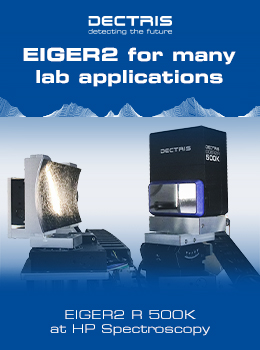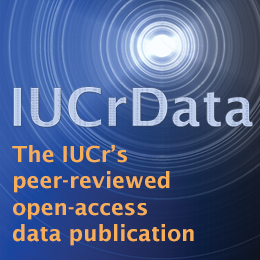


Obituary
Jack David Dunitz (1923–2021) and chemical crystallography
![Jack Dunitz [Jack Dunitz]](https://www.iucr.org/__data/assets/image/0020/154262/JDD80th.png)
Jack on the occasion of his 80th birthday (photo taken by Jay Siegel).
Jack Dunitz, emeritus professor of chemical crystallography at the Organic Chemistry Laboratory of Eidgenössische Technische Hochschule Zürich (ETHZ), passed away on 12 September 2021 at the age of 98. Jack was a leading figure in chemical crystallography. He addressed and solved a broad range of chemical problems with the help of structural information from diffraction experiments.
Attempting to appreciate Jack’s merits in science runs the risk of bias. This danger can be minimized, however, by listening to Jack’s own words. In an essay entitled ‘La Primavera’ (Dunitz, 2013), Jack reflects on his formative years, the time before he took his position at ETHZ in 1957; in 2021 Jack looked back on his long life in science in two interviews1 conducted by E. Carreira, his colleague at ETHZ and editor-in-chief of the Journal of the American Chemical Society; Jack’s relationship vis-à-vis molecular biology is the theme of a conversation with E. Carafoli conducted in 2017 (Carafoli, 2017); in the journal Chimia Jack chats about exploring the world of science, his wanderings and his life in Zürich, inside and outside of ETHZ (Weber, 2011). This account attempts to portray Jack’s most important achievements against the background of concepts and activities prevailing during the time of his involvement in science. Hargittai (2021) writes in a similar vein.
Jack was born on 29 March 1923 in Glasgow (Scotland) where he grew up into the golden age of X-ray and chemical crystallography. During his education his high school teacher got him interested in the sciences and World War II brought him to the group of the renowned crystallographer J. Monteath Robertson to do PhD research. He learned the art and science of structure determination: art because structures like the ones Jack worked on, with H, C and O atoms only, had first to be guessed at; direct methods had not yet been invented; science to the extent there were systematic heavy atom methods such as the Patterson method and the isomorphous replacement method, the latter invented by his supervisor. After gaining his PhD in 1944, his journeyman’s years had him work with actual and future Nobel laureates, Dorothy Hodgkin in Oxford, Linus Pauling at Caltech and Sir Lawrence Bragg at the Royal Institution. He learned from the best. During his early career he published and joined ranks with the group of people who would constitute the core of chemical crystallography in the second half of the twentieth century.
In 1953 Jack married Barbara Steuer in Den Haag (Netherlands). The couple had two daughters, Marguerite (born 1955) and Julia (born 1957) and 68 happy years together. In their home in Küsnacht (Switzerland) Jack and Barbara were superb hosts.
In the first half of the twentieth century, the developing field of X-ray crystallography started to provide basic structures at the atomic level for a broad variety of inorganic, organo–metallic, organic and biological compounds. These efforts together with progress in quantum chemistry – often at a qualitative level – culminated in new insights into the nature of the chemical bond as summarized in Pauling’s (1960) book with the same title. Jack made lasting contributions to these efforts. On the basis of the semi-quantitative ligand field theory, Jack and Leslie Orgel explained structures of inorganic binary solids that were incompatible with the simple model of ionic bonding between charged spheres. Together Jack and Leslie also determined the unusual and surprising sandwich-type structure of ferrocene and characterized the metal–ligand bonding based largely on symmetry considerations. Ferrocene and its close relatives would remain a recurrent topic in Jack’s Zürich research with P. Seiler. During an excursion into gas phase electron diffraction Jack and Verner Schomaker determined the structure of the cyclobutane molecule, among others. They confirmed the suspected elongated C—C bond distances and interpreted them in terms of repulsion between the non-bonded carbon atoms on the diagonal of the ring.
Around the middle of the twentieth century, the chemistry community, organic chemists in particular, realized that X-ray analysis had the potential for determining the constitution, configuration and conformation of their compounds. This would relieve them from the onerous task of structure determination by chemical degradation and free resources for improving their synthetic methodology. Jack’s study with D. Hodgkin of a calciferol derivative settled its structure once and for all. At ETHZ, organic chemists and Nobel laureates L. Ruzicka and V. Prelog decided that X-ray crystal structure analysis, then primarily practiced in mineralogy, would be a fruitful physical chemical addition to their organic chemistry laboratory and Jack was to start such a group at ETHZ. Initially the ‘infrastructure’ of the laboratory consisted of a few X-ray generators, Weissenberg and precession cameras and a darkroom with boxes of photographic film. In the 1960s, this equipment was supplemented first by a linear and then a four-circle Hilger & Watts diffractometer, computer-controlled and equipped with an electronic point detector. These machines made visual estimation of diffraction intensities from films obsolete and reduced the time needed to measure diffraction data for a crystal – reflection by reflection – from months to about a week. The output of crystal structures increased dramatically, not least because in the early 1960s access to an ETHZ mainframe computer replaced the occasional night shifts at the computer of the local post office for solving structures with Patterson or direct methods and refining them with least-squares algorithms (at a rate of two or three cycles per night and often in block-diagonal approximation). With these technical advances it became possible to investigate families of related compounds in a reasonable amount of time, e.g. during a PhD project. Much more ambitious research problems could now be tackled routinely.
At the time of Jack’s arrival at ETHZ there was no reliable quantum chemistry for quickly energy-optimizing structures of new molecules. Instead more or less successful interpolation schemes were invented. They took the form of empirical force fields whose structural and energetic parameters were optimized with experimental data. Their development required sampling bond distances, bond angles, torsion angles and non-bonded distances over as large a range as possible and combining structural with energetic information. At ETHZ, Jack started to determine structures of saturated, medium-sized carbon-ring compounds whose chemistry was actively studied in Prelog’s laboratory. Connecting the ends of a chain to form a ring reduces molecular flexibility, some structural parameters become interdependent and are no longer free to assume their acyclic ‘strain-free’ values. Jack’s studies of ring structures, many of them together with O. Ermer, were a rich source of information on strained bond and torsion angles. His results also answered tantalizing questions concerning unexpected trans-annular chemical reactivity and preferred arrangements of substituents. For the four-, five- and six-membered rings, Jack and J. Waser worked out the geometric constraints which take relatively simple algebraic forms.
The follow-up study on medium-ring lactams including some protonated forms was also based on the idea of ring constraints. The different ring sizes forced deformations of Pauling’s planar peptide group, the detailed structure of which could be combined with other information to create an approximate potential energy surface of its non-planar deformations and cis–trans conformational interconversion. This work, performed with F. Winkler, may be regarded as an early example of ‘structure correlation’.
The best known ‘structure correlation’ resulted from a collection of molecules showing a nucleophilic nitrogen atom at different distances from an electrophilic carbonyl carbon atom with an N…C=O angle of ~105°. Its discovery in 1972 was serendipitous. E. Shefter, an academic guest in the Dunitz group, collaborated with H.-B. Bürgi, then a young academic in the ETHZ laboratory of inorganic chemistry, on the crystal structure determination of methadone, at the time the main drug to treat heroin addiction. The backbone of the molecule was found to bend back onto itself to bring its amine nitrogen close to a carbonyl carbon atom. When Jack learned of the observation, he offered to scrutinize what he called ‘the good old friends collection of literature data’. After a few days (without e-mail and without online access to the Cambridge Structural Database!) Jack came up with a handful of publications on compounds showing an N…C=O fragment in different stages of the approach of N to C=O. Together the molecules could be seen as mapping the reaction pathway of a nucleophile attaching itself to a carbonyl group to form a tetrahedral molecule. In the following years N…C=O interactions were invoked in a wide range of chemical phenomena, from stereospecificity of chemical reactions to stabilization of protein structures.
The concept of ‘structure correlation’ can be seen as a natural extension of Pauling’s systematization of bond distances in terms of atomic radii and of the electronegativity differences between the bonded atoms. The concept is based on specifying a structural fragment, collecting all available structural data for the fragment in more or less different environments, and characterizing the distribution of its bond distances, angles and torsion angles in terms of a semi-quantitative energy surface. Such distributions usually show characteristic correlations among the different structural parameters, thus explaining the name of the concept. The principle was applied to tetrahedral molecules among others and led to conformational maps of conformationally flexible molecules. With the Cambridge Structural Database (CSD) a structure correlation study is now an almost trivial, undergraduate exercise. In the early 1970s, the CSD had a mere 2000 entries, but for Jack and his collaborators these were only accessible through the hardcopy book series Molecular Structures and Dimensions. In Zürich online access to the CSD had to wait until 1977.
Up to the mid-1990s most meetings on crystallography featured lectures or microsymposia on ‘Structure Correlation’. An early overview of Jack’s work in this field can be found in part two of his book X-ray Analysis and the Structure of Organic Molecules written in 1976, when Jack held the distinguished Baker Non-resident Lectureship at Cornell University (Dunitz, 1979, 1995). In 1994, Jack and H.-B. Bürgi edited a multi-author, two-volume book summarizing the topic (Bürgi & Dunitz, 1994). Talking about books, another one of Jack’s publications must be mentioned here. For Jack, the crystallographer, symmetry was a sine qua non as it was for his chemistry friend E. Heilbronner. Together they wrote ‘Reflections on Symmetry in Chemistry ... and elsewhere’ (Heilbronner & Dunitz, 1993), ‘the best popular exposition ever written on symmetry and its role in chemistry’ as R. Hoffmann wrote in his book review (Hoffmann, 1993).
The work on N…C=O interactions stimulated interest in looking at other non-bonded interactions, not just their geometry, but also their chemical context. Jack and his group, primarily W. B. Schweizer, M. Kaftory and J. D. Wallis, studied many related interactions between nucleophiles and electrophiles attached to the 1- and 8-positions of naphthalene. Nucleophiles and electrophiles were shown to have different directional preferences in their non-bonded contacts to divalent sulfur. These works are crucial forerunners of the still popular topics of halogen bonding, chalcogen bonding and all their relatives across the periodic table.
During the three decades following his retirement Jack started to question the meaningfulness of transferring the idea of atom–atom interactions, so successful in describing the (Pauling) chemical bond, to non-bonded atom pairs. Do short intermolecular contacts necessarily imply stabilizing interactions? Together with A. Gavezzotti he ranked Desiraju’s supramolecular synthons as stable, neutral or unstable, depending on the interaction energies between the fragment electron densities rather than between pairs of atoms in the synthons. From there it was but a small step to generalize the procedure to clusters of molecular charge densities and to estimate cohesive energies with contributions from their Coulomb, polarization, dispersion and Pauli repulsion energies. These ideas live on in a somewhat modified, extended form and are generally accessible in the widely used program Crystal Explorer with its numerical and graphical tools.
Jack liked problems, puzzles and mysteries. He did not always find the ultimate answer to open questions, but his essays on everything he wrote about are erudite, profound, interesting and entertaining.
One problem had to do with electron difference densities: as diffraction data became more accurate and differences between observed and model electron densities increasingly reliable, the question arose as to why some bonds in organic molecules showed an accumulation of (bonding) electron densities, while others did not. The problem lead to a flurry of activities by the charge density community and eventually to a more correct understanding of difference densities.
One puzzle Jack worked on with J. Bernstein: the disappearing polymorphs, i.e. crystal phases of substances that were routinely crystallized – some during long times – but unexpectedly vanished and only a different, usually more stable polymorph could be obtained and the original crystallization not reproduced. What seemed like a mystery initially could be broken down into pieces of a jigsaw. It was not entirely clear which pieces were essential and how to put them together, but the puzzle pointed to the necessity of searching for the unknown factors responsible for the lack of reproducibility. Controlling polymorphism has become an important aspect of drug development. Crystallization, especially the events during nucleation, are still largely uncharted territory.
One mystery, one that remains largely mysterious, is that in catalogs of organic chemicals, molecules with an even number of carbon atoms are systematically more numerous than those with an odd number. Why?
Jack pursued many other scientific interests such as the ion-selectivity of ionophores (with M. Dobler). The study with R. Taylor entitled ‘Organic fluorine hardly ever accepts hydrogen bonds’ is Jack’s most cited paper. With K. Trueblood, E. Maverick and C. P. Brock, all three regular sabbatical guests in the Dunitz group, he studied atomic and molecular motion in crystals. With his last PhD student, E. Nowotny-Bregger, Jack sought to elucidate the molecular motion required for a first-order phase transition. Although much experimental information was accumulated, Jack concluded: ‘I have no explanation of these remarkable results’. Some 25 years into his retirement Jack hoped to breathe new life into the topic: ‘I had hoped to find on the Internet an up-to-date review of what is known today about first-order phase transitions in organic crystals. My search was a disappointment. This branch of science, which still seems so interesting to me, does not appear to be a very popular area of study. ... I write this little essay, however, with the hope that it may stimulate some young scientist to reexamine these problems with modern methods and especially with new ideas and thereby to fill some of the gaps in our understanding’ (Dunitz, 2016).
During his time at ETHZ Jack was part of a tightly knit group within the laboratory of organic chemistry. He partnered, among others, with A. Eschenmoser for studies of corrins and enamines and with D. Seebach for studies of Lienolates and other organic Li salts. Their friendship in science and in life helped shape an institution that was far more than the sum of its parts. Many world-renowned academic guests, not just crystallographers, and many postdocs visited with Jack’s group or with the laboratory of organic chemistry. When they joined the lunch table of the Dunitz group all sorts of topical, challenging and seemingly crazy questions were discussed. For example, who would want to know how many locomotives the Swiss railroads operate? Probably nobody, but the discussion taught the lunch guests how to make reasonable guesses, individually or as a group, about problems of which they knew next to nothing. This author benefited from the spirit in the Dunitz group and the ETHZ laboratory of organic chemistry during four years in Jack’s group as a PhD student and, after returning from a postdoctoral stay, during another eight fruitful years as a young academic. An important part of the collaboration with Jack was paper writing in his office during lunch time. In some sessions no more than a single sentence was discussed, eventually written down and often modified the next day. Clear language was important to Jack. His preoccupation with texts goes with his interest in literature. His attitude lives on in Dunitz’s rule: ‘Almost every scientific paper can be improved by deleting the first sentence.’
Jack’s contributions to chemical crystallography were widely recognized: he was awarded the centenary Prize of the Royal Society of Chemistry (1977, with G. Olah and K. S. Pitzer), the Paracelsus Prize of the Swiss Chemical Society (1986), the Gregori Aminoff Prize of the Royal Swedish Academy of Sciences (1990), the Buerger Award of the American Crystallographic Association (1991), the Havinga (1980) and Bijvoet (1989) medals. Jack was elected Fellow of the Royal Society of London and member of the German Academy of Sciences Leopoldina, the Academia Europaea and the European Academy of Sciences and Arts; he was a foreign member of the Royal Netherlands Academy of Sciences, the US National Academy of Sciences, the American Philosophical Society, and the American Academy of Arts and Sciences. Jack was awarded honorary doctorates from Technion (1990), Weizmann Institute of Science (1992) and the University of Glasgow (1999), and honorary membership of the Swiss Society of Crystallography, the Royal Society of Chemistry, the Swiss Chemical Society and the British Crystallographic Association.
Jack expressed his stance towards crystallography in a short essay on the future of crystallography: ‘ ... if crystallography has an uncertain future it has a great past and it still possesses the rare intellectual charm of relating to the three basic sciences, physics, chemistry and mathematics, as well as to the decorative arts. It should not be taught or studied in a too restrictive, introspective manner’ (Dunitz, 2002). Jack’s writings express this ‘rare intellectual charm’ and he and his work certainly are an integral part of crystallography’s ‘great past’.
References
Bürgi, H.-B. & Dunitz, J. D. (1994). Structure Correlation, Vols 1 and 2. Weinheim: VCH.
Carafoli, E. (2017). Biochem. Biophys. Res. Commun. 492, 1–17.
Dunitz, J. D. (1979). X-ray Analysis and the Structure of Organic Molecules. Cornell University Press.
Dunitz, J. D. (1995). X-ray Analysis and the Structure of Organic Molecules, corrected reprint. Basel: Helvetica Chim Acta.
Dunitz, J. D. (2002). Z. Kristallogr. Cryst. Mater. 217, 299–300.
Dunitz, J. D. (2013). Helv. Chim. Acta, 96, 545–563.
Dunitz, J. D. (2016). Phys. Scr. 91, 112501.
Hargittai, I. (2021). Struct. Chem. 33, 291–297.
Heilbronner, E. & Dunitz, J. D. (1993). Reflections on Symmetry in Chemistry ... and Elsewhere. Weinheim: VCH Verlagsgesellschaft.
Hoffmann, R. (1993). Angew. Chem. Int. Ed. Engl. 32, 129–130.
Pauling, L. (1960). The Nature of Chemical Bond. Ithaca: Cornell University Press.
Weber, L. (2011). Chimia, 65, 440–443.
1. Part 1: https://www.youtube.com/watch?v=bCTMoUEH5ts.
1. Part 2: https://www.youtube.com/watch?v=jN03OQLfjrI
This obituary was originally published in Acta Cryst. (2022). B78, 270–273.
For a list of papers by Professor Dunitz appearing in IUCr journals click here.
Copyright © - All Rights Reserved - International Union of Crystallography









